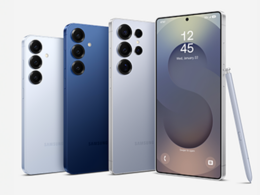I was among the last of my friends to get a smartphone. I viewed it as a luxury, but not any more. I’ve grown so dependent on my phone that I freak out when I realize I left it at home, even if I’m only running to the supermarket.
If you’re buying your first smartphone, expect to fall under its spell faster than you can get a dial tone after plopping a coin in a pay phone. By the way, good luck finding a pay phone, let alone one that takes coins. Another good reason to buy a cell phone.
Examine your finances
New smartphones can cost anywhere from $120 to $1,000. Before you start shopping, figure out how much you can afford to spend on a phone. Remember to add in the cost of your service plan—your phone is just an expensive toy if you’re not connected to a network. Check out the variety of data plans offered at AT&T
Can you purchase a phone outright? Sweet, but don’t fret if money’s tight. Cell phone installment plans are your friend. You can divide the phone’s cost over time, most likely 24 to 30 months. AT&T and other major providers make it easy to combine your cell phone installment price and monthly service charge into budget-friendly amounts.
Prepaid phones and plans are a great option for those with no credit history or a low credit score. They can also help you determine how much you use your phone if you ever want to switch to a service plan with text, talk, and data limits. You may discover that your best bet is an unlimited data plan to avoid overage charges. Learn how to pick a data plan
Remember, you’ll also be adding a few accessories, like a protective case, charging dock, and wireless headphones. The AT&T accessories website gives you a good idea of what’s available.
Survey the market
Now that you have a budget in mind, it’s time for some research.
Ask your friends what they like most and least about their smartphones. You might learn that some wish they’d bought a phone with a larger screen, so they could see more at a glance. Others may have discovered their larger phone is difficult to fit in a pocket. Those who like to take selfies and want to make video calls may regret buying a phone without a front-facing camera. Learn from their mistakes, um, experiences.
Do some hands-on research! Test a variety of phones to discover what you like.
- Feel the differences in texture, size, and weight
- Listen to the audio quality
- Compare the displays to see which ones are easiest to read
- Try to make a call or take a photo without asking for help
This will help you narrow the field to a handful of favorites.
Decode the specs
Making sense of smartphone specs can be a lot like learning a new language. Larger numbers are always better, right? Not necessarily. If you don’t need a lot of storage or the ability to edit videos, you could end up paying more for features you won’t use.
Here are some common specs:
Central processing unit (CPU) or operating system (OS): Think of this as the brain that tells your smartphone what to do. Pick an operating system that’s compatible with your personal computer and other devices. This isn’t a must, but it’s usually easier for your phone to communicate with your other computing devices if they’re all from the same family.
Storage size: Get as much internal storage as you can afford if you plan to keep high-resolution photos or videos, lots of apps, and your entire music collection on your phone. Or buy a phone that has a microSD card slot, so you add more storage later.
Display resolution: Look for the measurements in pixels per inch (PPI). The higher the PPI, the crisper the picture. Lower PPI tend to blur images and typefaces.
Waterproof ratings: Pay attention to the 2 numbers following the letters IP, like 67 or 68. The first number tells you how easily solid particles can get in to the phone. The second number indicates how well the phone resists water. Higher numbers mean better protection. Learn more
Battery life: Compare the average talk, standby, video playback, and audio playback times. Longer, of course, is better. You don’t want to worry about recharging your phone in the middle of your day. And, find out how long it typically takes to recharge the battery. Keep in mind that quick-charge adapters don’t work with all makes and models.
Camera specs: Capture sharper pics of friends and family on smartphones with high-end cameras. Look for cameras with more megapixels (MP) to take photos with the most detail. Want to take self-portraits? Be sure to get a phone with both a front- and a rear-facing camera.
Look for bargains
Check out older models, which tend to drop in price as soon as newer ones hit the market. Plus, any software bugs should already be fixed. Or, consider buying a refurbished phone, like AT&T Certified Pre-Owned or AT&T Certified Restored phones.
Also, tell all your early adopter friends you’re in the market. Maybe they’ll offer you a sweetheart deal on their old phone when they’re eligible for a phone upgrade.
Go forth and buy
You’ve done your homework—it’s now time to shop. Hate battling the crowds at the mall? Save time and shop online at AT&T
Enjoy your new phone. If you’re like me, you’ll wonder why you didn’t take the leap sooner!
This article was written by an AT&T employee. The postings on this site are my own and don’t necessarily represent the positions, strategies, or opinions of AT&T.





